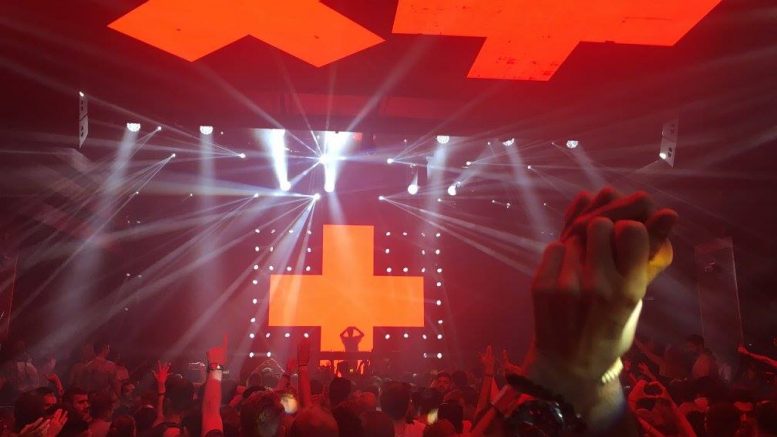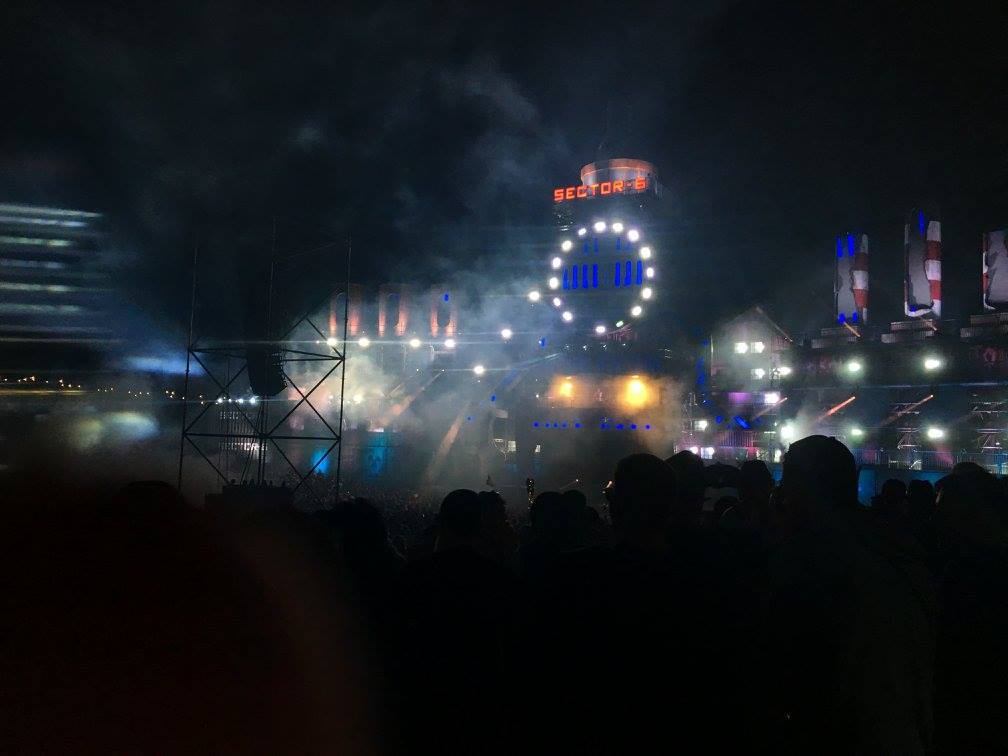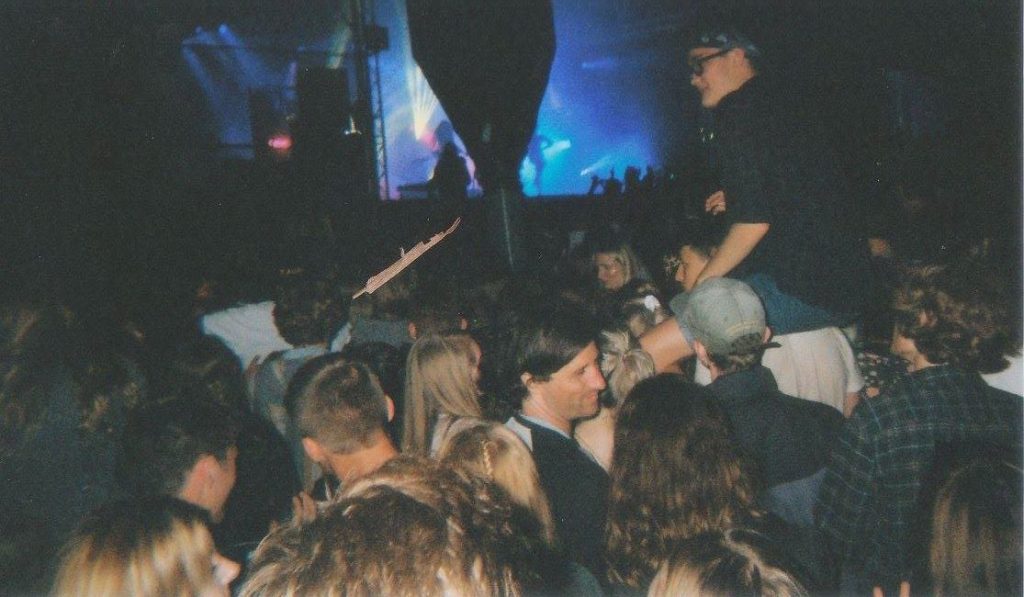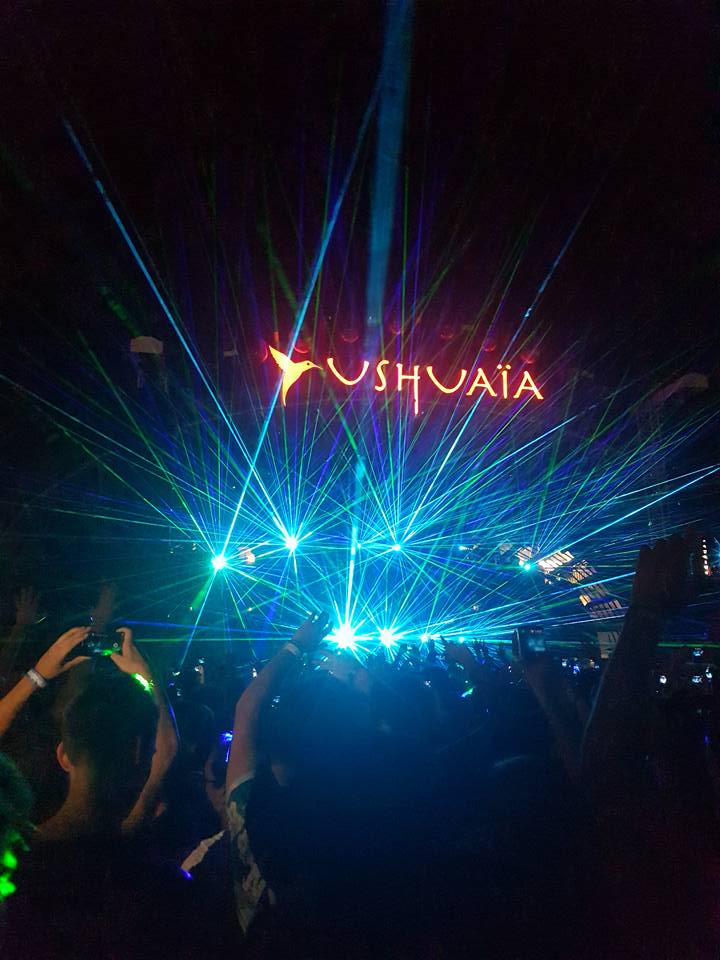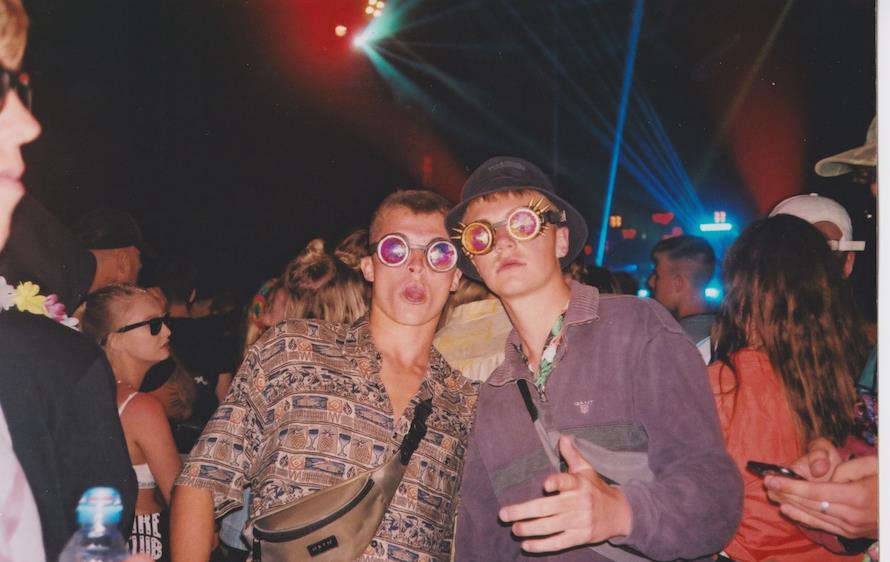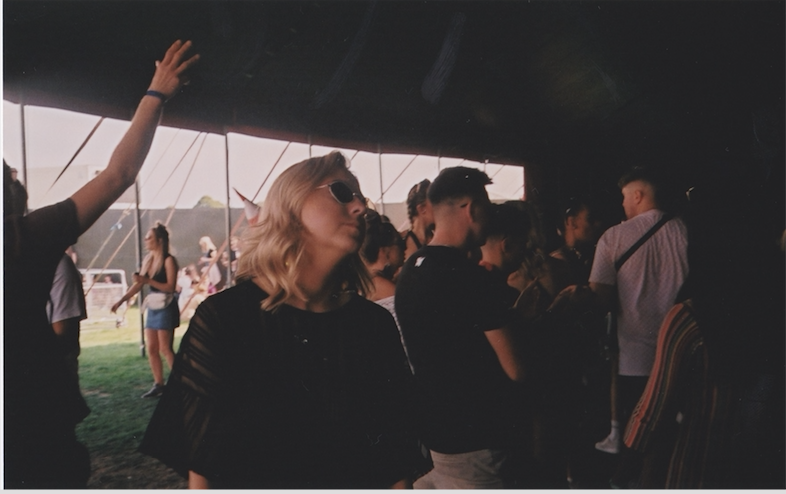What is rave culture?
Rave was born in the 1980’s. Different strands of ‘rave’ began to develop across the UK. This period in time was the start of something big in the music world. The birth of experimental electronic music lead to a range of new subcultures. These subcultures have created an iconic image for rave culture which has carried on some stereotypes of the scene today.
Rave culture: many people think of the influx of illegal raves taking place in the 80’s and 90’s. The combination of neon glow-sticks and ecstasy. Ecstasy had become a popular drug within rave culture. When acid house music first dropped in the UK people would congregate to listen but there was a lack of dancing to this specific genre of music until ecstasy came along and the rave scene had never been bigger or better.
https://www.instagram.com/p/BtbdX5sHF-V/?utm_source=ig_web_copy_link
The negative connotations that came with rave culture including drugs and anti-social behaviour after events such as the 1992 ‘free party’ at Castlemorton Common. This party was a turning point for rave culture. The week-long event attracted 40,000 people from all walks life. This was the event which became the catalyst for what happened next.
https://www.instagram.com/p/Ba3xpH0ly6Y/?utm_source=ig_web_copy_link
The UK government enforced the Criminal Justice and Public Order Act in 1994. This meant that police could stop open air raves with a hundred or more people. The governments crack down on rave culture meant that illegal raves decreased in popularity.
Did rave culture die after the Criminal Justice act?
After the Criminal Justice and Public Order Act was implemented clubs saw the gap in the market for raves and started hosting their own events. However, with ticket prices sometimes reaching up to £65, are clubs just appropriating rave culture to make money rather than keeping the spirit of rave alive?
One thing about the rave scene in the UK is that everyone is there for the same reason: music, people and dance (and maybe ecstasy).
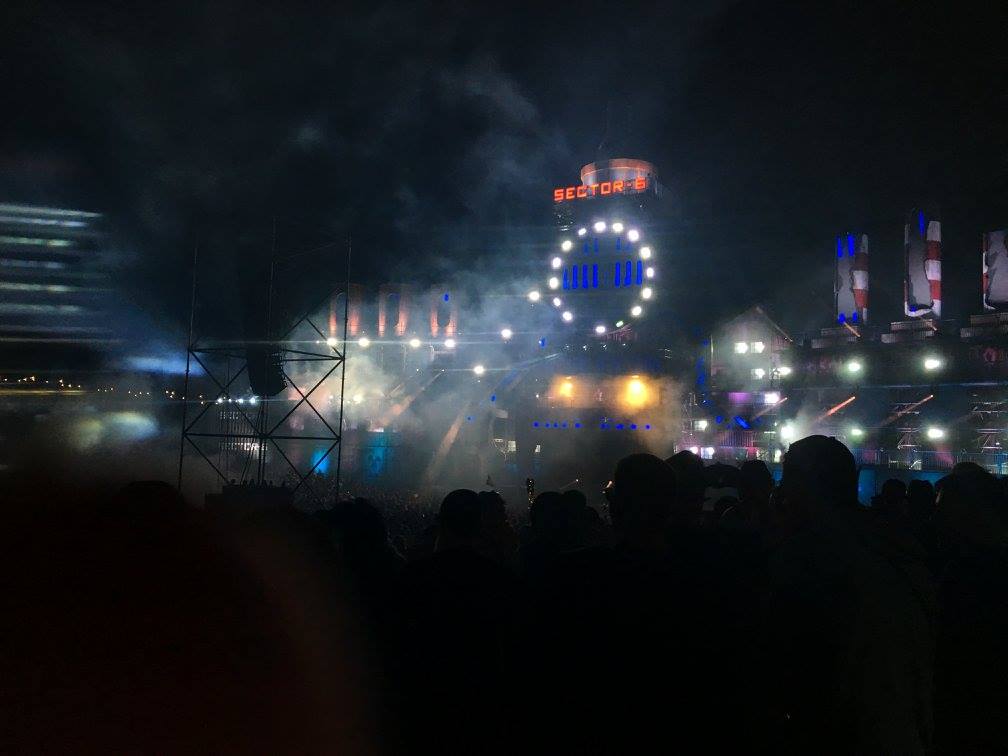
Boomtown Festival. / Source: Jessica Pennell
Clubs continue to carry on rave events today, but, while clubs are closing down across the UK is there anywhere to rave? The clubs that are trying to keep the culture alive have been forced to take extra security measures or implement restrictions on event times.
Many clubs, such as Printworks, in Canada Water, which opened in January 2017 host some of the biggest DJ’s in London at the moment. The old printing press warehouse exclusively only holds day events to avoid having a late-night venue license.
The illegal rave scene is still prominent, many promoters, DJ’s and the crowd that they attract do it mainly for free and to explore and be involved in the music.
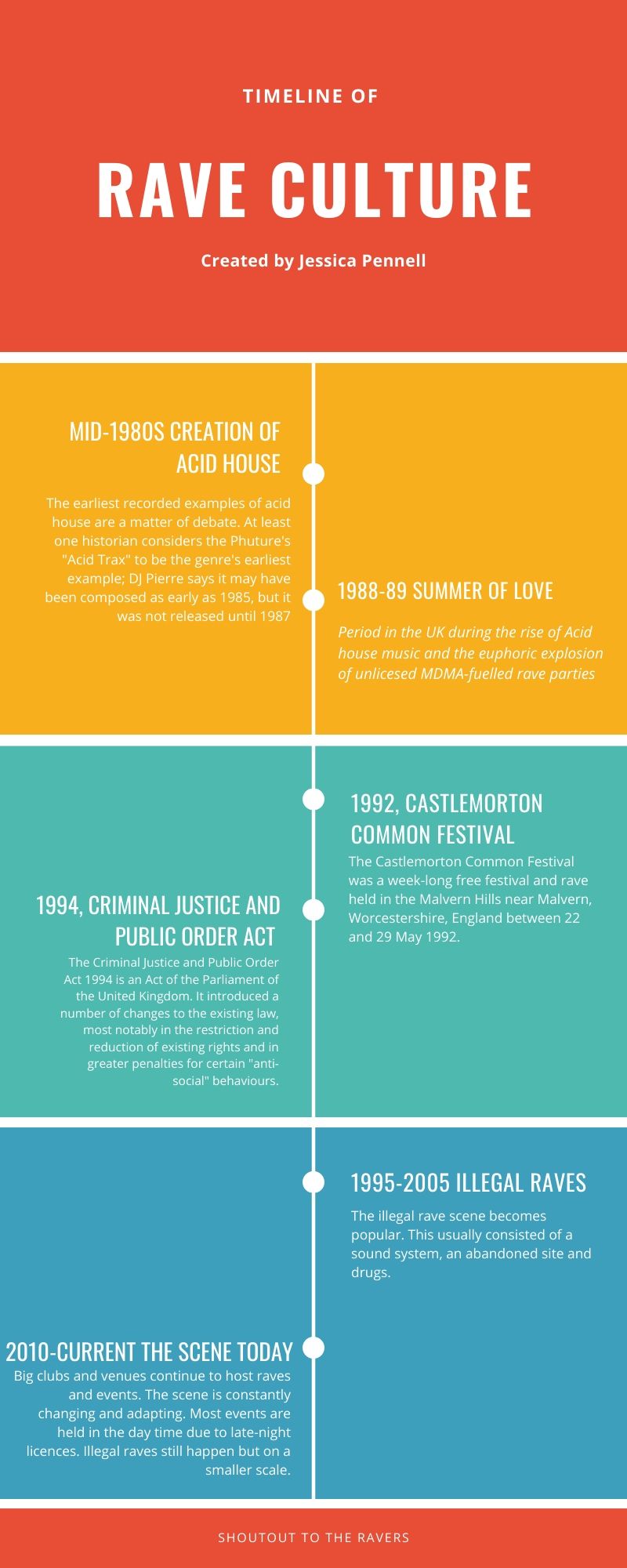
Rave culture timeline source: Jessica Pennell
What is the rave scene like today?
Looking around me there’s a sea of people. All dancing, skanking and dripping in sweat. Walking into the main room of the huge converted warehouse. The bass is bouncing on the walls and through the floor. Smiles and wide-eyes all around me.
One of the first things I notice at the event is how friendly everyone is. Having arrived less than ten minutes ago I was approached by a young girl with two of her friends, “oh my god! Dance with me!”
I said I would if she would be so kind to answer some quick questions, to which she happily agreed.
What do you think about the rave scene in London at the moment?
“I think rave culture is coming back to popularity and there are more events than before”.
How often do you go out raving?
“I used to go to more illegal raves as a younger teenager, they were more accessible for people under 18 who couldn’t go out to clubs to rave. Being young and not really having a secure job for income was also part of it – I’d rather go to an illegal rave where I could take my own alcohol and be with a great group of people”
What do you think about the prices clubs like Printworks put on rave tickets?
“It depends, I know the clubs want to make money and I’m willing to pay the price if it’s got a good line-up but sometimes places try to charge £50+ and I think that is just exploiting young people who just want somewhere to go and have a good time!”
Her friend, Max, interjects; “I think the prices are ridiculous we just want to have a good time and the police keep shutting down illegal raves – we just want to PARTY!”
https://www.instagram.com/p/B5QNuY9hLaw/?utm_source=ig_web_copy_link
Printworks as a venue is ideal for events. The huge warehouse conversion is equipped with laser lights, smoke and impressive projections. The venue has a large outside courtyard area for smoking, it also has three bars serving alcohol and soft drinks.
Why do you think clubs charge high prices for drinks?
“I think it’s mad. £8.50! I could buy my own bottle of vodka for that – such a joke. I think clubs just want to rinse as much money as they can off people because they know they will pay it. We don’t have anywhere else to go and rave.”
What do you think about clubs choosing to do all day events?
“I get why they are doing it – I do believe with all the restrictions on closing times and permits that this is a practical solution. There must be some people who still want to create a place to rave!”
So, is rave culture dead?
The short answer is, no. With the government’s efforts to ban illegal raves and closing down clubs across the UK throughout the years, you would think the culture of rave would be decreasing but it seems to be at an all-time high. Young people want to go out and rave to good music with like-minded people. That hasn’t changed, it’s just adapting. We just hope it gets better for all you ravers!
Sources:
Printworks website
Canva
https://www.spectator.co.uk/2017/08/thirty-years-ago-britain-invented-acid-house/
- Boomtown. Photo: Jessica Pennell
- illegal rave. Photo: Jessica Pennell
- Ushuaia. Photo: Jessica Pennell
- Ushuaia. Photo: Jessica Pennell
- Club night. Photo: Jessica Pennell
- Ravers. Photo: Jessica Pennell
- Rave. Photo: Jessica Pennell

